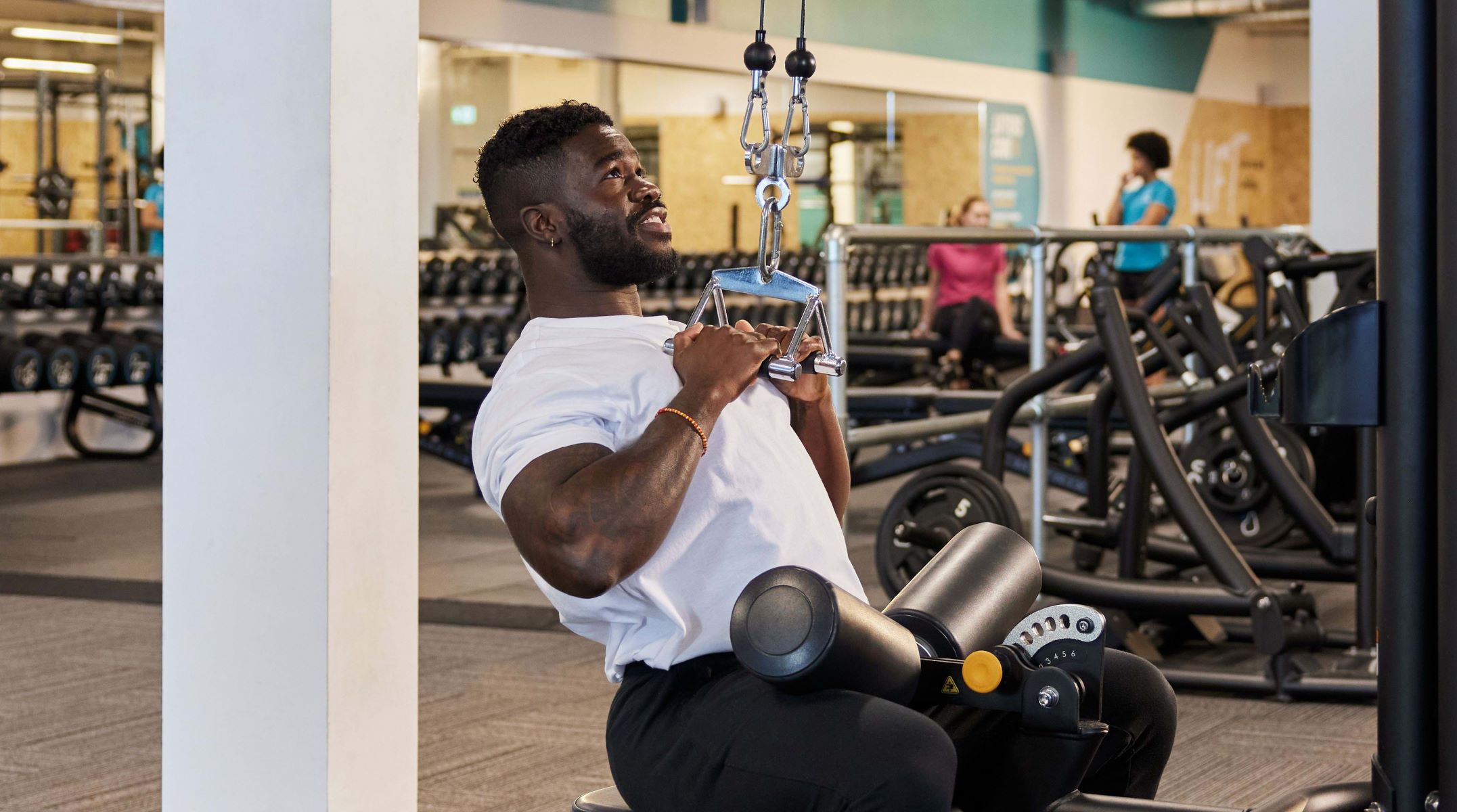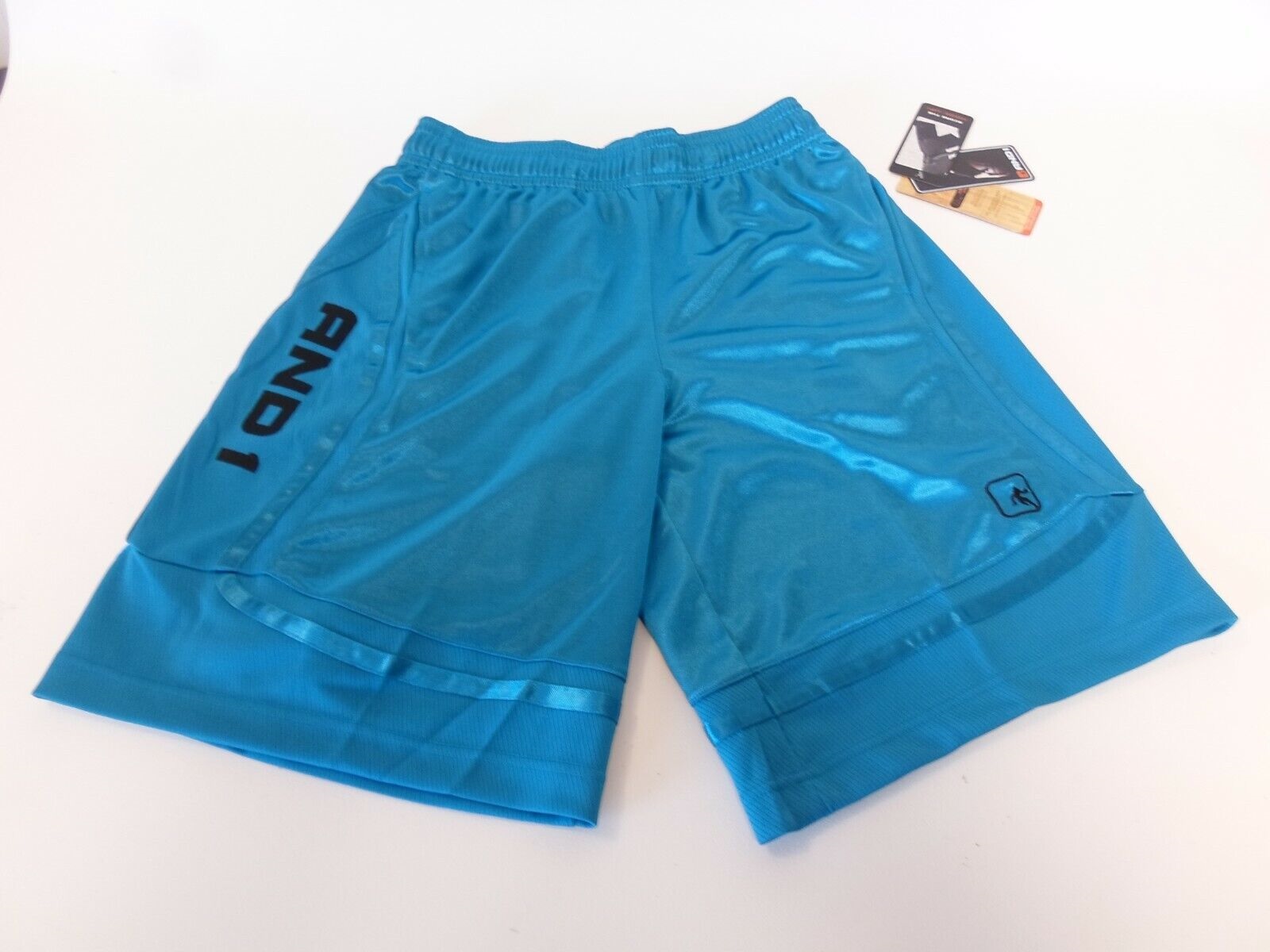

Featured
What Is Cutting Workout
Modified: August 21, 2023
Discover the benefits of a featured cutting workout routine and sculpt your body with targeted exercises for a leaner physique.
Introduction
Welcome to the world of fitness and body transformation! If you’ve ever wondered what it takes to achieve a lean and ripped physique, you’ve come to the right place. In this article, we will delve into the world of cutting workouts and explore how they can help you reach your fitness goals.
When it comes to fitness, there are two main components: building muscle and losing fat. While both are important, cutting workouts focus specifically on the latter. The primary objective of a cutting workout is to reduce body fat while preserving the hard-earned muscle you’ve built.
Cutting workouts are popular among individuals who want to achieve a lean and toned physique, such as bodybuilders, fitness enthusiasts, and those preparing for a special event or competition. These workouts typically involve a combination of cardiovascular exercises, strength training, and a focus on nutrition and diet.
Embarking on a cutting workout journey requires dedication, discipline, and a proper understanding of the process. It’s not just about the physical aspect; it’s also about mental resilience and commitment. As you progress through your cutting workout program, you will witness changes not only in your body composition but also in your overall well-being.
In this article, we will explore the various components of a cutting workout, including the benefits, common exercises, nutrition tips, and how to design an effective cutting workout routine. We will also discuss the mistakes to avoid and provide valuable tips to stay motivated throughout your journey.
So, whether you’re a seasoned fitness enthusiast looking to take your physique to the next level or a beginner starting on your fitness journey, this article will serve as a comprehensive guide to understanding and implementing cutting workouts.
What is Cutting Workout?
Cutting workout, also known as a fat loss or leaning phase, is a specific training and nutrition regimen aimed at reducing body fat while maintaining muscle mass. It involves a combination of exercise, calorie restriction, and macronutrient manipulation to create an energy deficit, forcing the body to utilize stored fat for fuel.
The primary goal of a cutting workout is to achieve a lean, defined, and shredded physique by eliminating excess body fat. Unlike bulking, where the focus is on building muscle mass, cutting workouts prioritize fat loss. By reducing body fat percentage, muscle definition becomes more visible, resulting in a more chiseled appearance.
During a cutting phase, individuals typically follow a calorie deficit diet, meaning they consume fewer calories than their body needs to maintain its current weight. This deficit, combined with the right training program, triggers the body to tap into its fat stores for energy, leading to weight loss.
A well-designed cutting workout incorporates a combination of cardiovascular exercises, strength training, and high-intensity interval training (HIIT) to maximize calorie burn and preserve muscle mass. Cardio exercises such as running, cycling, or swimming help increase the calorie deficit, while strength training exercises like weightlifting or bodyweight exercises help maintain muscle mass.
In addition to exercise, nutrition plays a crucial role in a cutting workout. It is essential to consume the right balance of macronutrients, including protein, carbohydrates, and healthy fats, to support muscle maintenance and aid in fat loss. Many individuals also utilize nutritional supplements to support their cutting goals, such as whey protein, branched-chain amino acids (BCAAs), and fat burners.
It’s important to note that cutting workouts are not a quick fix or a short-term solution. They require dedication, consistency, and patience. Results may take time to show, but with a well-structured cutting workout program and proper nutrition, you can achieve your desired physique.
Benefits of Cutting Workout
Engaging in a cutting workout offers numerous benefits beyond just achieving a lean and shredded physique. Let’s explore some of the key advantages of incorporating a cutting workout into your fitness routine:
- Reduced Body Fat: The primary purpose of a cutting workout is to lower body fat percentage. By creating a calorie deficit and engaging in effective exercises, you can shed excess fat and achieve a more defined and toned appearance.
- Muscle Definition: Cutting workouts help bring out muscle definition by reducing fat deposits. As you lose body fat, your muscle definition becomes more visible, giving you a sculpted and ripped look.
- Better Overall Health: Losing excess body fat not only improves your physical appearance but also enhances your overall health. It lowers the risk of various lifestyle diseases such as diabetes, cardiovascular issues, and hypertension.
- Improved Performance: Cutting workouts help enhance your athletic performance by improving strength, endurance, and agility. As you shed excess weight, you’ll experience increased speed, power, and overall fitness level.
- Increased Confidence: Achieving your desired body composition through a cutting workout can boost your self-confidence. Feeling fit, healthy, and proud of your accomplishments can have a positive impact on all aspects of your life.
- Enhanced Metabolism: Engaging in regular cutting workouts can boost your metabolism, even after your workout is complete. This means that your body will continue to burn calories at a higher rate, aiding in weight management and fat loss.
- Improved Body Composition: Cutting workouts help you achieve a balanced body composition by reducing body fat while maintaining muscle mass. This results in a healthier, leaner, and more aesthetic physique.
Keep in mind that the benefits of a cutting workout are not limited to the physical aspect alone. The discipline, commitment, and dedication required during the process can also have a positive impact on your mental well-being, self-discipline, and overall lifestyle choices.
Common Exercises in Cutting Workout
A well-rounded cutting workout routine incorporates a variety of exercises that target different muscle groups and maximize calorie burn. Here are some common exercises often included in a cutting workout:
- Cardiovascular Exercises: Cardio exercises such as running, cycling, swimming, or using the elliptical machine are effective for burning calories and increasing heart rate. These exercises help create a calorie deficit, which is essential for fat loss.
- High-Intensity Interval Training (HIIT): HIIT workouts involve short bursts of intense exercise followed by brief periods of rest. This type of training accelerates fat burning, boosts metabolism, and preserves muscle mass.
- Strength Training: Strength training exercises are crucial for maintaining muscle mass during a cutting phase. Resistance training with weights, resistance bands, or bodyweight exercises help stimulate muscle growth and strength while increasing calorie expenditure.
- Compound Movements: Compound exercises engage multiple muscle groups simultaneously, making them highly effective for burning calories and building functional strength. Examples of compound movements include squats, deadlifts, bench presses, and rows.
- Circuit Training: Circuit training involves performing a series of exercises back-to-back with minimal rest. This type of training keeps your heart rate elevated, increases calorie burn, and promotes muscular endurance.
- Core Exercises: Strengthening the core muscles is important for overall stability and functional movement. Planks, crunches, Russian twists, and bicycle crunches are a few examples of effective core exercises.
- Functional Training: Incorporating functional movements into your cutting workout routine helps improve overall athleticism and enhances your ability to perform daily activities. Exercises like lunges, step-ups, and kettlebell swings fall under this category.
It’s essential to include a combination of these exercises in your cutting workout routine to ensure you target all major muscle groups, burn calories, and maintain strength and muscle mass. Remember to prioritize proper form, gradually increase weights and intensity, and allow adequate rest and recovery time between workouts.
Nutrition and Diet Tips for Cutting Workout
When it comes to a successful cutting workout, proper nutrition plays a vital role in supporting fat loss while preserving muscle mass. Here are some essential nutrition and diet tips to consider during your cutting phase:
- Calorie Deficit: To lose body fat, you need to create a calorie deficit by consuming fewer calories than your body needs. Aim for a moderate calorie deficit (usually 500-750 calories below maintenance) to ensure sustainable fat loss without risking muscle loss.
- Macronutrient Balance: Focus on a balanced macronutrient ratio that includes adequate protein, moderate carbohydrates, and healthy fats. Protein is crucial for muscle maintenance and repair, while carbohydrates provide energy for workouts, and fats support hormone production and overall health.
- Protein Intake: Consuming enough protein is essential to preserve muscle mass during a cutting phase. Aim for 0.8-1 gram of protein per pound of body weight. Good sources of protein include lean meats, poultry, fish, eggs, legumes, and dairy products.
- Complex Carbohydrates: Choose complex carbohydrates such as whole grains, fruits, and vegetables over refined sugars and processed foods. These provide sustained energy and essential nutrients while keeping you feeling fuller for longer.
- Healthy Fats: Incorporate healthy fats from sources such as avocados, nuts, seeds, and olive oil. These fats support satiety, hormone balance, and overall health.
- Hydration: Stay properly hydrated to support optimal performance, metabolism, and overall health. Aim for at least 8-10 glasses of water per day and hydrate before, during, and after workouts.
- Mindful Eating: Practice mindful eating by paying attention to your hunger and fullness cues. Avoid emotional eating or mindless snacking, and focus on nutrient-dense, whole foods.
- Meal Timing: Spread your meals throughout the day, with a focus on pre-and post-workout nutrition to support energy levels and recovery. Consider incorporating a mix of pre and post-workout carbohydrates and protein for optimal performance and recovery.
- Monitor Progress: Keep track of your food intake and progress to ensure you’re on the right track. Use a food diary or mobile apps to monitor calorie intake, macronutrient distribution, and adjust as necessary.
Remember, nutrition is highly individualized, and what works for one person may not work for another. It’s essential to consult with a registered dietitian or nutritionist to customize a meal plan that aligns with your specific needs and goals.
How to Design a Cutting Workout Routine
Designing an effective cutting workout routine requires careful planning and consideration. Here are some important steps to help you create a routine that supports fat loss while maintaining muscle mass:
- Set Clear Goals: Determine your specific goals for the cutting phase, whether it be a certain body fat percentage, weight loss, or muscle definition. Having clear goals will guide your workout program and help you stay motivated.
- Choose a Training Split: Decide on a training split that works for you, such as a full-body workout, an upper/lower body split, or a push/pull/legs split. This will determine how you structure your weekly workouts.
- Incorporate Cardiovascular Exercises: Include cardiovascular exercises such as running, cycling, or rowing to increase calorie burn and create a calorie deficit. Aim for 2-3 sessions of moderate to high-intensity cardio per week.
- Add Strength Training: Incorporate strength training exercises to maintain muscle mass while cutting fat. Focus on compound movements that target multiple muscle groups and include both resistance training and bodyweight exercises.
- Include HIIT Workouts: Incorporate high-intensity interval training (HIIT) sessions into your routine to maximize calorie burn, improve cardiovascular fitness, and amplify fat loss. Alternate periods of intense exercise with short recovery periods.
- Vary Your Workouts: Avoid monotony and keep your workouts challenging by changing exercises, rep ranges, and intensity levels. This will prevent plateaus and keep your body guessing.
- Focus on Progressive Overload: Continuously challenge your muscles by gradually increasing weights, reps, or sets over time. Progressive overload stimulates muscle growth and prevents muscle loss during a cutting phase.
- Prioritize Recovery: Allow adequate rest and recovery days between workouts to prevent overtraining and promote muscle repair. Get enough sleep, practice stress management techniques, and listen to your body’s signals.
- Consider Professional Guidance: If you’re new to designing workout routines or need guidance, consider working with a certified personal trainer or fitness professional who can create a customized cutting workout plan tailored to your goals and fitness level.
Remember, consistency and adherence to your cutting workout routine are key. Give yourself time to see results and make adjustments as needed. Stay motivated, track your progress, and celebrate small achievements along the way.
Mistakes to Avoid in Cutting Workout
While embarking on a cutting workout journey, it’s important to be aware of common mistakes that can hinder progress and impact your results. Avoiding these pitfalls will ensure you stay on track and maximize the effectiveness of your cutting workout. Here are some mistakes to be mindful of:
- Extreme Calorie Restriction: Going to extreme measures of calorie restriction can lead to muscle loss, metabolic slowdown, and nutrient deficiencies. Aim for a moderate calorie deficit that supports fat loss while preserving muscle mass.
- Overdoing Cardio: While cardiovascular exercise is important for calorie burn, excessive cardio can lead to muscle loss and hinder progress. Balance your cardio sessions with strength training to maintain muscle mass.
- Neglecting Strength Training: Cutting workouts should not focus solely on cardio. Neglecting strength training can lead to muscle loss instead of fat loss. Incorporate resistance exercises to maintain muscle mass and preserve your metabolism.
- Not Tracking Macros: Failing to track your macronutrient intake can hinder progress. Ensure you monitor your protein, carbohydrate, and fat intake to support muscle maintenance and energy levels.
- Skipping Recovery: Pushing yourself too hard without adequate rest can lead to overtraining, fatigue, and lack of progress. Allow your body enough time to recover and heal from workouts.
- Ignoring Proper Form: Performing exercises with improper form increases the risk of injury and reduces the effectiveness of the workout. Focus on maintaining proper form and technique to target the intended muscle groups.
- Becoming Scale-Addicted: Relying solely on the scale for progress can be misleading. Muscle gain and water retention can impact weight. Pay attention to changes in body composition, measurements, and how you feel overall.
- Not Adequately Hydrating: Staying hydrated is crucial for optimal performance and fat loss. Dehydration can hinder metabolism and hinder progress. Aim to drink enough water throughout the day.
- Impatience: A cutting phase takes time, and visible results won’t happen overnight. Avoid getting discouraged or impatient if progress seems slow. Stay consistent, trust the process, and celebrate small victories along the way.
Avoiding these mistakes will help you stay on the right track and optimize your cutting workout results. Remember, sustainable progress comes from a balanced and realistic approach to fitness and nutrition.
Tips to Stay Motivated During Cutting Workout
Staying motivated during a cutting workout can be challenging, especially when faced with obstacles or slow progress. However, with the right mindset and strategies, you can maintain your motivation and push through the tough times. Here are some tips to help you stay motivated during your cutting workout:
- Set Achievable Goals: Set specific, measurable, and achievable goals that align with your cutting workout. Break them down into smaller milestones to track your progress and celebrate your achievements along the way.
- Find Your “Why”: Determine your underlying reasons for wanting to pursue a cutting workout. Whether it’s improving your health, boosting confidence, or preparing for a competition, remind yourself of your motivations regularly.
- Visualize Success: Imagine yourself achieving your desired physique and visualize how it will feel. Create a vision board or use visualization techniques to keep your goals at the forefront of your mind.
- Find an Accountability Partner: Connect with a friend, workout buddy, or online community that shares similar goals. Having someone to hold you accountable, share progress, and provide support can greatly enhance your motivation.
- Track Your Progress: Keep a record of your workouts, measurements, and body composition changes. Seeing tangible evidence of your progress can help fuel your motivation and provide a sense of accomplishment.
- Switch Up Your Routine: Avoid falling into a workout rut by trying new exercises, classes, or training methods. Keep your workouts engaging and exciting to prevent boredom and maintain motivation.
- Reward Yourself: Set up a reward system for reaching milestones or adhering to your cutting plan. Treat yourself to non-food rewards such as new workout gear, a massage, or a relaxing day off.
- Stay Positive: Maintain a positive mindset and focus on your achievements rather than setbacks. Surround yourself with positive influences, practice positive self-talk, and remember that progress is not always linear.
- Find Inspiration: Surround yourself with motivation by following fitness influencers, reading success stories, or joining supportive online communities. Draw inspiration from others who have achieved similar goals.
- Take Rest Days: Rest and recovery are integral parts of any workout program. Listen to your body, prioritize sleep, and give yourself permission to rest and recharge. Pushing too hard without adequate rest can lead to burnout.
Remember, motivation may ebb and flow throughout your cutting workout journey. It’s essential to stay disciplined, focused, and consistent despite temporary setbacks. Embrace the process, stay committed to your goals, and celebrate every step forward.
Conclusion
Cutting workouts are an effective way to achieve a lean, defined physique by reducing body fat while preserving muscle mass. By following a well-designed cutting workout routine and adopting a balanced and nutritious diet, you can reach your fitness goals and unveil the toned physique you desire.
Throughout this article, we’ve explored the various aspects of cutting workouts, including what they are, their benefits, common exercises, nutrition tips, and how to stay motivated. Remember to set clear goals, track your progress, and make adjustments as necessary to keep your cutting workout on track.
It’s crucial to avoid common mistakes such as extreme calorie restriction, neglecting strength training, and overdoing cardio. Instead, focus on maintaining a balanced approach that includes both resistance training and cardiovascular exercises.
Staying motivated during a cutting workout can be challenging, but by finding your “why,” visualizing success, and seeking support from others, you can overcome obstacles and stay on track towards achieving your goals.
Finally, be patient, as the process of cutting and transforming your body takes time. Embrace the journey, stay consistent, and celebrate each milestone along the way. With determination, discipline, and the right approach, you can achieve the lean and toned physique you’ve always wanted through a cutting workout.






